Devotion – Part 2: Spain
Chapter 3: Real Alcázar & Seville
Our primary reason for traveling to Seville was to see the Real Alcázar of Seville. Our second interest was to see the cathedral there that is purported to be extraordinary; however, the cathedral was not open when we had the time to see it. In hindsight I wish we had planned to have another day in Seville.
Seville was conquered by the Umayyad Caliphate in 712 CE. In 913 the first Calif of Andalucía, Abe al Rahman III (who built a new minaret at the mosque in Córdoba) built a fortress at the site of what was a Christian basilica. In the 11th century Al-Mu’tamid, expanded the structure with a new palace.
With the start of the Christian Era in Seville the Real Alcázar was converted to the residence of Cristian monarchs. Under the rule of Isabella and Ferdinand the second floor was extended and transformed into the main residence of monarchs.
Although it is easier to get tickets at the Real Alcázar than for the Alhambra, one should plan/buy tickets in advance. Fifteen minutes after our timed entrance we had a second timed entry to see the residence on the second floor. One must arrive early for the second entry. The two entries are designed so that after getting into the compound you go immediately to the second floor residence with a separate timed ticket. At the entry to the residence we had to first have ALL belongings including cameras, cell phones, packs and purses scanned by X-ray and then placed in a lockable locker before the start of a small (about ten people) group tour that was guided by timed recorded messages in English and supervised by a guard who moved the group along. Consequently, I have no photos of the residence. After that tour we could retrieve our belongings and see the rest of the compound at leisure.
Of all of the historical Moor architecture I saw in Spain, this was my favorite. The extraordinary design features, especially the archways, colors and details took my breath away.


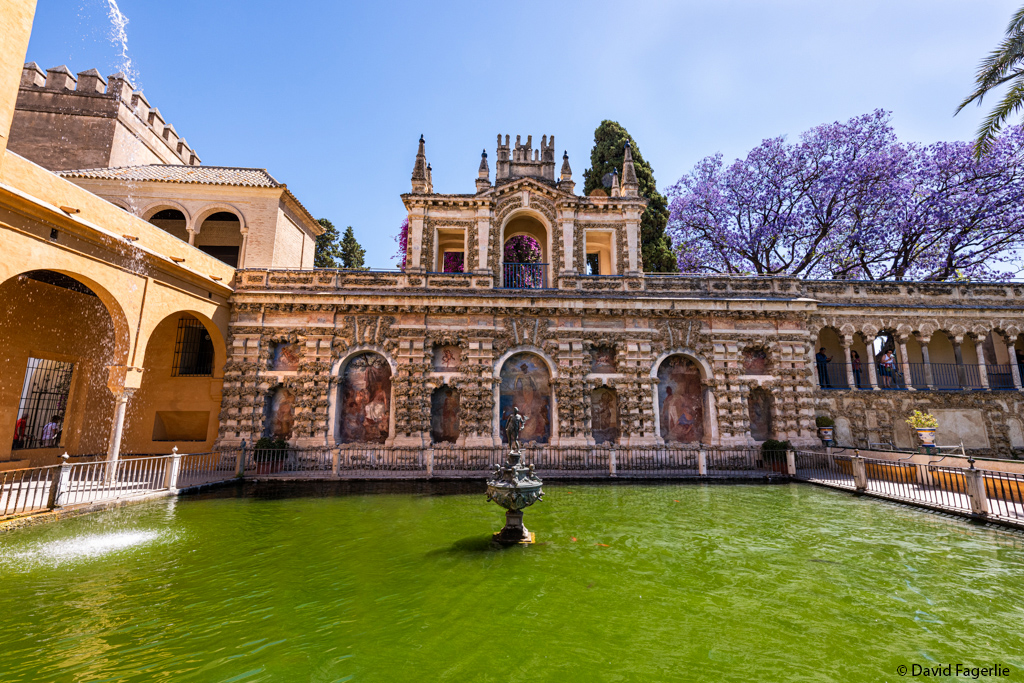
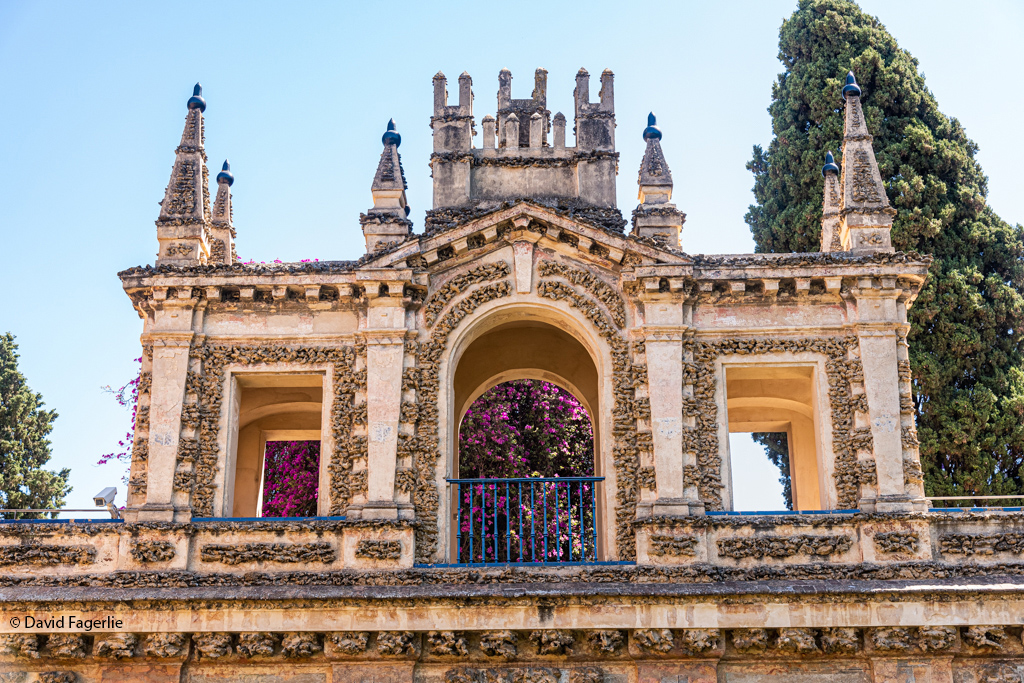




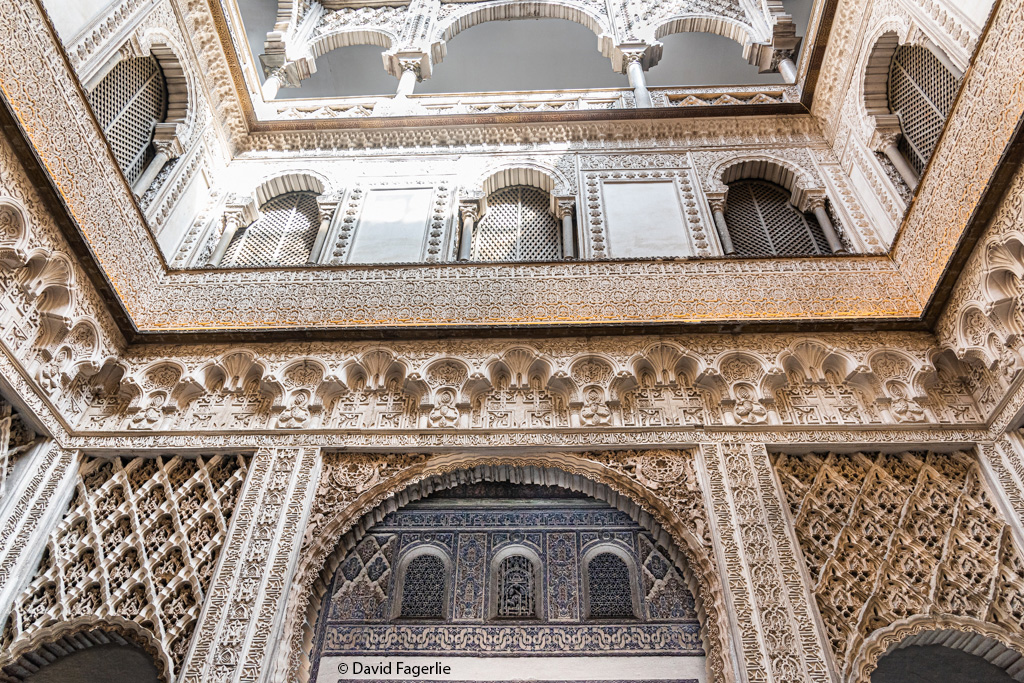












Under the main building is a bath that was used regularly by female royalty.
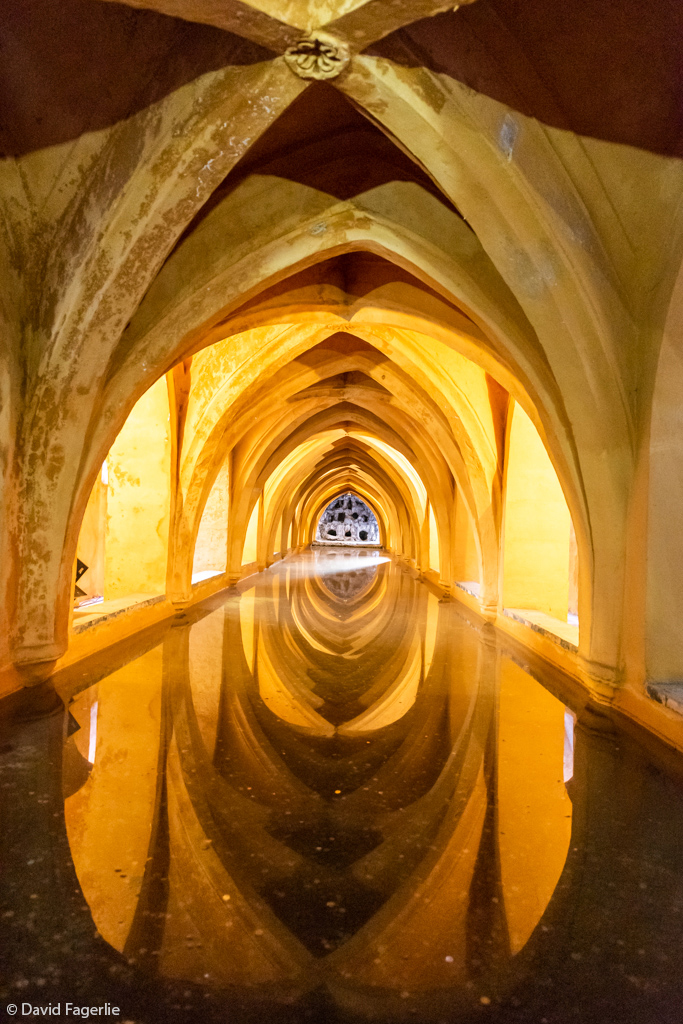
Seville is the largest city in Andalucía. In 2020 the population of the city was about 703,000. Seville is on the Guadalquivir River about fifty miles from the Atlantic Ocean and the only river port in Spain. Like Córdoba, Seville attracts many tourists and it is a wonderful city for hanging out and dining at outdoor cafes.





The Plaza de España, designed by Aníbal González, was a principal building built at the beautiful Maria Luisa Park to showcase Spain's industry and technology exhibits at the Exposición Iberoamericana de 1929, the 1929 world’s fair. Beautiful.





Seville has a most interesting modern art structure that provided for interesting photos. “Standing in the Plaza de la Encarnación is Metropol Parasol, also known as the 'mushrooms of Seville' ('Setas de Sevilla'). This building, which opened in 2011, was designed by the German architect Jürgen Mayer, who won a design competition to revitalise the square. It is the largest wooden construction in the world (150 x 70 meters and 26 meters in height). Mayer won the competition partly thanks to the way he integrated the remains of a Roman colony into his building. People originally wanted to build a parking lot here, but that idea was abandoned when these Roman remains were discovered.” – Seville City Guide
At ground level the entrance brings you to the preserved Roman ruins. After gawking at that for a while we bought inexpensive tickets to board an elevator to the top of the mushroom.







Higher resolutions images are available as a slide show in Galleries.
A TIP: In Galleries you can go forward or backward with the arrow keys on your computer or swipe with your tablet. Especially for this chapter, I recommend seeing the photos in full screen. The artistic details of the Alcázar are extraordinary. You can access the gallery for this chapter directly by clicking HERE.
Next Monday we travel north a short distance to Toledo.
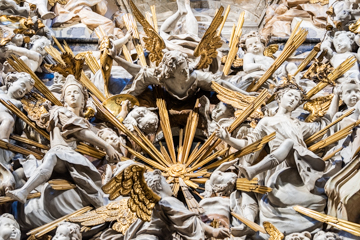
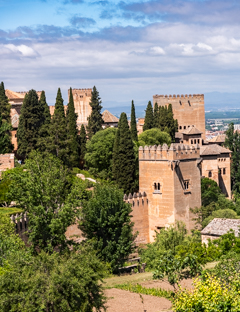
September 23, 2020
Chapter 4: Toledo
On the banks of the Targus River in central Spain is the small city of Toledo.